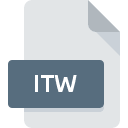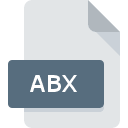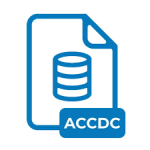.ITW File Extension

InTouch With Database
| Developer | Prairie Group |
| Popularity | |
| Category | Database Files |
| Format | .ITW |
| Cross Platform | Update Soon |
What is an ITW file?
.ITW files are associated with InTouch, a widely used software platform developed by Wonderware for creating and managing graphical interfaces in industrial environments.
These files serve as containers for storing InTouch window templates, which define the layout, appearance, and functionality of various screens within an HMI application.
Originating from the need to streamline human interaction with complex industrial processes, InTouch empowers operators to monitor, control, and troubleshoot machinery and systems with intuitive graphical representations.
More Information.
InTouch made its debut in the early 1990s, heralding a new era in industrial automation by offering a revolutionary approach to HMI development.
With its drag-and-drop interface, extensive library of pre-built graphical elements, and powerful scripting capabilities, InTouch democratized the creation of HMIs, enabling engineers and operators alike to design sophisticated interfaces without extensive programming knowledge.
.ITW files were conceived as part of InTouch’s architecture to facilitate the modular construction of HMI applications.
By encapsulating window templates within these files, InTouch ensured consistency across multiple screens while allowing for easy modification and reuse of interface elements.
Origin Of This File.
The genesis of .ITW files can be traced back to the evolution of HMI software solutions, where the demand for user-friendly interfaces in industrial settings prompted the development of specialized tools like InTouch.
As industries embraced automation to enhance efficiency and precision, the need for software capable of bridging the gap between humans and machines became increasingly apparent.
Wonderware, a pioneer in industrial automation software, recognized this need and embarked on creating a platform that would empower users to build dynamic, interactive interfaces tailored to their specific requirements.
Thus, InTouch was born, with .ITW files emerging as essential components for defining the visual and functional aspects of HMI applications.
File Structure Technical Specification.
.ITW file is a structured document encoded in a proprietary format optimized for efficient parsing and rendering by the InTouch runtime engine.
While the exact specifications of this format are proprietary to Wonderware, the file typically contains metadata describing the properties and behavior of graphical objects such as buttons, text fields, and animations.
Internally, an .ITW file may employ a hierarchical structure to organize its contents, with each node representing a distinct element of the HMI interface.
This hierarchical arrangement facilitates navigation and manipulation of the interface components within the InTouch development environment.
How to Convert the File?
Converting .ITW files to other formats or vice versa often involves specialized software tools designed for interoperability between different HMI/SCADA systems.
Wonderware provides utilities within the InTouch software suite for exporting and importing project files, including .ITW files. Additionally, third-party conversion tools may offer broader compatibility and functionality for handling .ITW files.
When converting .ITW files, it is essential to consider the integrity of data and graphical elements, ensuring that the converted files retain their original structure and functionality.
Thorough testing and validation procedures should be employed to verify the accuracy and reliability of converted files before deployment in production environments.
Advantages And Disadvantages.
Advantages:
- Modularity: .ITW files enable the modular construction of HMI applications, allowing developers to create reusable templates for common interface elements.
- Ease of Maintenance: By encapsulating window templates within .ITW files, developers can easily update and modify interface elements without affecting other parts of the application.
- Interoperability: InTouch’s support for .ITW files ensures compatibility across different projects and installations, facilitating collaboration and standardization.
Disadvantages:
- Proprietary Format: The proprietary nature of .ITW files may pose obstacles for interoperability with third-party software or migration to alternative platforms.
- Dependency on InTouch: .ITW files are tightly coupled with the InTouch development environment, limiting their portability to other HMI systems.
- Version Compatibility: Changes to the InTouch software architecture or file format may introduce compatibility issues when working with .ITW files across different versions.
How to Open ITW?
Open In Windows
- .ITW files can be opened directly on Windows systems using InTouch software. Simply double-click the .ITW file, and it should open in the associated version of InTouch installed on your Windows computer.
Open In Linux
- As InTouch software is primarily designed for Windows, opening .ITW files on Linux may require emulation or virtualization solutions. You can use tools like Wine to run Windows applications on Linux systems. Install Wine, then right-click the .ITW file, select “Open With,” and choose Wine to run it with InTouch.
Open In MAC
- Similar to Linux, macOS users can utilize emulation or virtualization software to run InTouch and open .ITW files. Tools like Parallels Desktop or VMware Fusion allow you to create a virtual Windows environment on your Mac. Install InTouch within the virtual machine, then open the .ITW file as you would on a Windows system.
Open In Android
- Directly opening .ITW files on Android devices aren’t feasible as InTouch software is not available for Android. However, you can access .ITW files remotely by connecting to a Windows system running InTouch through remote desktop applications like Microsoft Remote Desktop or TeamViewer.
Open In IOS
- Like Android, iOS devices do not support InTouch software natively. You can remotely access .ITW files on iOS devices by connecting to a Windows system running InTouch via remote desktop applications available on the App Store, such as Microsoft Remote Desktop or TeamViewer.













